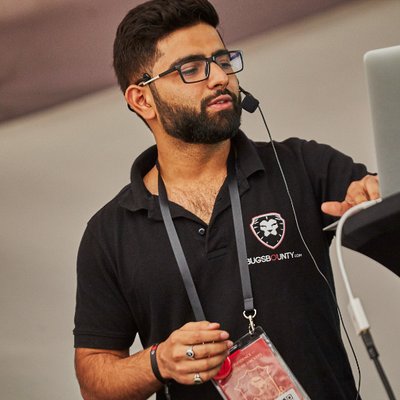November 27, 2023
Strengthening DevSecOps with web application security testing is crucial in today’s digital landscape. DevSecOps integrates security at every stage of the development pipeline, and application security testing is the most crucial part of the process. Security testing involves assessing applications for vulnerabilities, ensuring that security is not an afterthought but an integral part of the development process. This approach promotes early detection and mitigation of security vulnerabilities, reducing the risk of data breaches and cyber attacks. In understanding the importance of shifting the security to the left, EC-Council interviewed entrepreneur and author Himanshu Sharma, CISO at 5ireChain. He shares insights on how, by automating security testing within DevSecOps, organizations can save time and resources, improve code quality and enhance overall security posture, fostering a proactive and secure development environment, which is essential in the face of evolving cybersecurity threats.
Himanshu Sharma is an accomplished security expert in the computer and network security sector. With a proven track record, he excels in Windows security, vulnerability management, internet security, and ethical hacking. His expertise has fortified businesses against digital threats. Himanshu’s career reflects a passion for safeguarding data and systems, leveraging technology to protect against vulnerabilities. As a dedicated professional, his commitment to the field has made him a trusted leader in the industry, as he strives to create a safer digital landscape.
Excerpts from the interview:
1. In your opinion, what are the emerging trends or technologies influencing the future of web application testing, and how do you stay up to date with these advancements?
Emerging trends in web application testing include increased reliance on API testing, testing for business logic flaws, microservices testing, and integrating security into the DevOps pipeline (DevSecOps). I regularly follow industry news, read research papers, participate in webinars, and engage with the testing and security community through forums and conferences to stay current.
2. What are the main challenges from a security perspective in testing web applications, and how do you suggest security teams overcome them?
Security challenges in web application testing include the complexity of modern apps, frequent changes, zero-day vulnerabilities, and the need for seamless CI/CD integration. Overcoming these hurdles requires a proactive approach, combining comprehensive testing techniques, automation, continuous monitoring, and close collaboration between security and development teams.
3. What are the key differences between functional and non-functional testing in web applications?
Functional testing validates the application’s features and behaviors, while non-functional testing assesses performance, security, scalability, and usability. Functional testing ensures that the application works as intended, while non-functional testing evaluates how well it performs and whether it meets quality standards.
4. When you approach testing from a holistic security perspective, what strategies and methodologies do you typically recommend?
A holistic security testing approach involves threat modeling, penetration testing, code review, secure coding guidelines, and continuous monitoring. By identifying potential threats early, actively testing for vulnerabilities, promoting secure coding practices, and continuously monitoring for issues, we can enhance the overall security posture of web applications.
5. What do you believe are some of the common security vulnerabilities in web applications, and how you would identify and mitigate them?
Web application security is crucial these days, given how prevalent attacks have become. From my experience, in helping companies assess and improve their application security, the following are the ones we discovered frequently.
One of the biggest risks is SQL injection, which happens when user-supplied input gets incorporated directly into SQL query strings without validation or escaping. This allows attackers to execute arbitrary commands on the backend database. To prevent SQLi, all user input should be sanitized, and parameterized queries should be used. Web application firewalls can also help block SQL injection attempts.
Another common issue is cross-site scripting (XSS), where unauthorized scripts and payloads get injected into application responses and executed in the victim’s browsers. Validating input and output encoding on the server can help mitigate XSS. The browser can also use HTTP headers like Content-Security-Policy for protection.
Server misconfigurations are a major problem: unnecessary open ports, unused services left running, and weak default credentials. Regular hardening and patching of servers and frameworks is important to close these gaps.
Also, we can’t forget business logic flaws. Those occur when workflows in the application code can be abused to manipulate behavior in unintended ways. During design reviews, rigorous functional testing and abuse case analysis helps uncover logic flaws.
To detect these issues early, techniques like static (SAST) and dynamic (DAST) application testing, vulnerability scanning, and runtime monitoring complement secure coding practices.
6. How do you ensure compatibility aspects when testing a web application, especially for different types of cloud environments?
Ensuring compatibility across different cloud environments is a key concern when testing web applications since a single application may need to run on public and private clouds. The strategies I use include the following:
- First, build and test natively on your target cloud platforms from the start of development rather than just testing locally. This exposes potential compatibility issues with the cloud infrastructure much earlier, when they are easier to fix.
- Standardize your configuration management across environments using tools like Ansible, Puppet, or Chef. This automates environment configurations and reduces errors when deploying across dev, test, staging, and production.
- Parameterize configurations to separate platform-specific values like storage paths and resource names into configuration files. Use variables and scripts to load the right configs for each target cloud properly.
- Abstract underlying platform services like storage, queues, and databases behind SDKs or libraries so the application code can be more easily ported between cloud vendors.
- Automate provisioning and deployment using infrastructure-as-code tools like Terraform. Combine this with CI/CD pipelines for consistent and repeatable deployment.
- Monitor logs and metrics after deploying to production to catch compatibility issues like out-of-memory errors. Quickly remediate any problems found.
7. How do you suggest incorporating and managing web application testing into a CI/CD pipeline from a security and user-friendliness perspective?
Integrating security and usability testing into CI/CD pipelines is crucial for delivering high-quality web applications quickly.
Shift testing is left by building validation checks into the commit stage, like static analysis, unit testing, and code quality checks. This provides rapid feedback to developers on potential bugs and security flaws before they propagate further.
Automate functional, integration, and user acceptance testing next in the continuous integration stage. Leverage frameworks like Selenium to simulate user workflows and interactions. Focus these automated tests on security criteria like authentication, access controls, input validation, and core user journeys.
Complement testing automation with manual testing sprints at various stages to check visual design, user experience, accessibility, and exploratory security testing. These help catch issues automation might miss.
Automated compliance and security scanning validate production readiness from an infrastructure and application security perspective for staging and production deployments. Penetration tests provide additional assurance pre-release.
Monitoring, logging, and alerting post-deployment round out the process by providing rapid visibility into emerging issues.
The key is to shift testing left, augment automation with manual testing, and bridge development to operations with security and user experience in mind at every pipeline stage. This allows for delivering robust and secure web applications at speed.
Tags
About the Author

Himanshu Sharma
Head of Security, 5ireChain
The post Experts Insights: Strengthening Your DevSecOps with Web Application Security Testing appeared first on Cybersecurity Exchange.
Article posted by: https://www.eccouncil.org/cybersecurity-exchange/interview/strengthening-your-devsecops-with-web-application-security-testing/
——————————————————————————————————————–
Infocerts, 5B 306 Riverside Greens, Panvel, Raigad 410206 Maharashtra, India
Contact us – https://www.infocerts.com
This is the article generated by feed coming from KaliLinux.in and Infocerts is only displaying the content.
